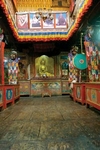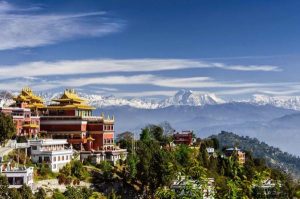King of Fruits in Nepal
Known as the ‘King of Fruits’, Mango rules most of the gardens in Terai region during the Nepali month of Jestha and Ashar. This delicious fruit is one of the most loved and desired fruits in Nepal which makes everyone, from children to old, tempt for more – piece of it or a chilly mango shake on hot sunny days.
Not only is mango a favorite fruit of the people in Nepal, it also holds a special place in our cultural and religious heritage. According to the Hindu mythology, when Lord Shiva and Parvati had come from the heaven, they had missed this heavenly fruit so much that Parvati requested Lord Shiva to create a mango tree by his divine power. Fulfilling her desire, he had created the tree and since then, mangoes people were able to devour this heavenly fruit.
The fruit is also mentioned in the ancient Sanskrit literature such as, in Valmiki’s Ramayana, mangoes were mentioned as the fruit of Kings and the princes used to pride themselves on the possession of large mango gardens. There are over 500 varieties of the mango in various shapes and sizes around the world with over 750 hybrid selections and in context of Nepal, the Terai regions of Siraha, Sarlahi, Mahottari, Sunsari, Jhapa, Kapilavastu and Morang along with some hilly districts like Kavre and Dhading produces more than 140,000 megaton of this seasonal fruit in a year.
Among the various varieties of mangoes available in the market in Nepal, some of the famous ones are mentioned below:
Alphonso
Mostly used for canning, pulping or export, this variety of mangoes produced during the mid-season are of highest quality and are also expensive.
Bombay Yellow
Found in larger quantity in the Nepali market, this variety of mangoes look bright yellow-orange in color and are produced between early seasons of February-April.
Maldaha
Rich and fleshy maldaha mangoes are found during the early monsoon months of April-June and are the most common type of mango for its wide availability and sweetness.
Dussehri
Grown in the northern part of India, this is one of the best varieties of mangoes imported to Nepal. This yellow fruit has fibreless flesh and is available in the months of June-August.
Mangoes are used for medicinal qualities in various parts of Nepal as kidney tonics and cure for headaches. The bark of the mango tree is useful in strengthening the nervous and blood system, giving rid to body of toxins and treating anemia while the dried mango flowers are used to cure dysentery, diarrhea and inflammation of the urinary tract. Moreover, the crushed mango seeds are used to clot bleeding. This fruit of gods, also known as the King of Fruits, mangoes have been a part of Nepali culture for many centuries and still today, it remains at the top as the favorite fruit for most of the people in Nepal.







